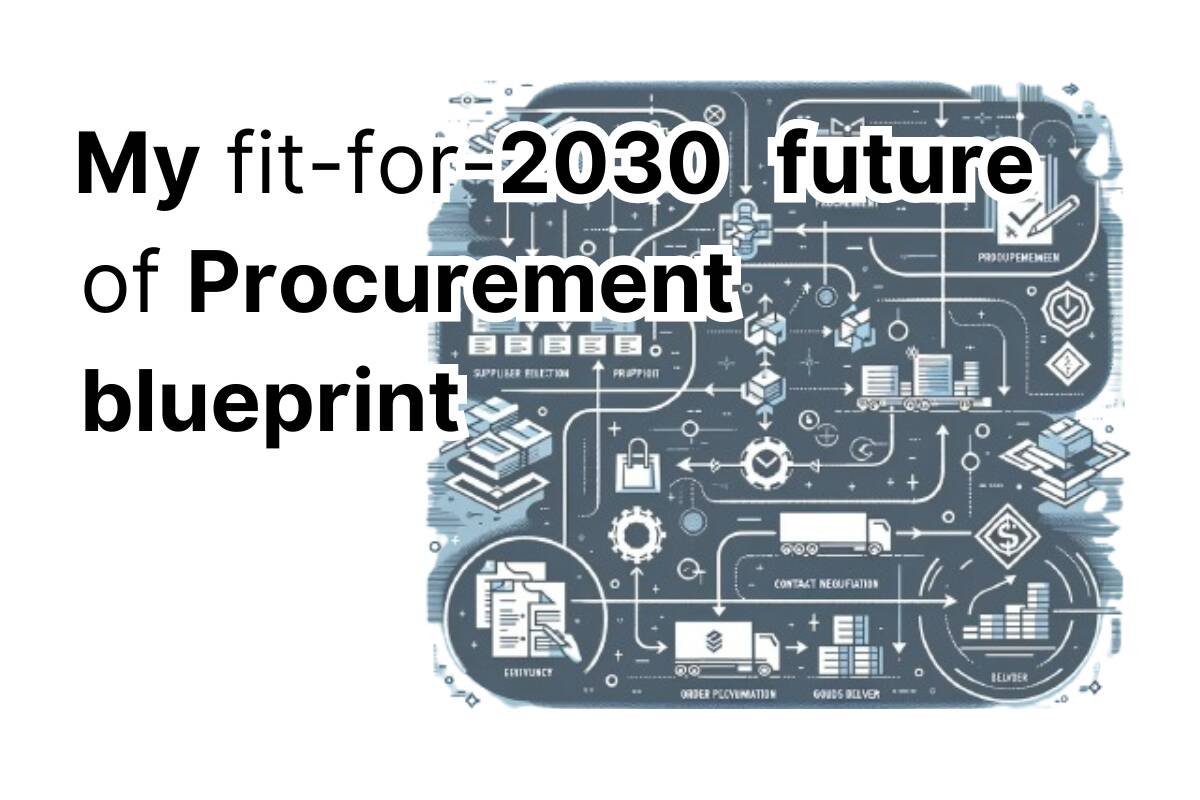Procurement continues to grow in stature. It is now generally seen as being a more strategic function than it historically has been. With this, the question of indirect procurement maturity must be tackled.
In many businesses – especially manufacturing companies – the focus has historically been on direct spend.
However, there has been a trend happening over the last 10 or so years to incorporate more indirect spend under the management of corporate procurement teams.
This article will tackle 7 fundamental yardsticks to help you quickly assess how mature your indirect procurement team is.
Assessing your indirect procurement maturity: 7 key questions
Direct procurement and indirect procurement are very different. This manifests itself in terms of the influence they have, and the relative stature each has within most organisations. Depending on the industry sector, your organisation is most likely the same.
Direct procurement teams tend to actively manage the supply base as a first point of contact. Indirect procurement teams, on the other hand, are oftentimes more at arm’s length and must earn the trust of internal business partners. Developing close relationships with your stakeholders and building trust are key to successful indirect procurement strategy.
If you’re a CPO or a senior procurement leader, there are some basic metrics we can look at to determine how mature your indirect spend management is.
So, here are 7 quick questions to serve as a very quick and dirty procurement maturity model across indirect procurement categories.
1. What is your total vendor count?
Across any category of indirect spend, with the exception perhaps of energy and utilities, there is a long tail of non-strategic, tail spend suppliers. Understanding the total number of vendors across any indirect purchasing category is a good place to start.
Once you have a decent spend taxonomy in place, you can easily categorise your suppliers per category.
Understanding which suppliers are critical vs. which ones are not will allow your indirect category management team to develop a supplier consolidation strategy.
In most cases, a workshop with stakeholders is the best approach. Putting together a simple red, yellow, green approach to identify critical, preferred and non-core suppliers is the easiest way to get alignment on where to start.
Then, the next step is having a more robust policy when it comes to adding new vendors. Indirect procurement software can help you here in the vendor master data and intake space.
2. What percentage of your indirect spend is under management?
Under contract does not mean that the spend is actively being managed. Take an honest assessment here.
What is the approximate percentage of your total indirect spend that is being managed by procurement? Do you even know or have an easy way of finding out? If you can’t, then this points to a wider problem of a lack of reliable spend data.
Let’s assume for now that you have some reasonably reliable data. Compare those indirect categories which are not being managed by procurement vs. those which are. How are the patterns of spend, number of vendors, contract terms, payment conditions and so on different?
Is it easy to demonstrate better metrics on the spend where your team’s involvement is adding value? You have a powerful business case to lobby for more resources if you can show this.
Perhaps you can even push for some procurement software to free up your team’s time. If you’re able to prove the value you deliver, it’s a much more convincing business case to argue (link) with your CFO!
3. What percentage of indirect spend is under an active price list or T&Cs?
This is a useful extension to the question about spend under management. It shines a light again on areas of unmanaged spend, or potential rogue vendors who could be “milking the cow” due to a lack of active management.
Not all spend can be easily consolidated into a fixed price list. However, some framework terms and conditions or master service agreement should be possible. This is especially the case for more complex indirect services categories.
It’s also a powerful reason to cut your long tail vendors, or ensure some form of standardised vendor intake. If new suppliers are being onboarded without any formal procurement involvement, then who has agreed what terms with them? And are these people adequately trained to do this? In most cases, they are almost certainly not.
Indirect procurement best practices always necessitate a more structured approach to managing vendor intake and onboarding. Without this, there is no legal fallback around whose terms and conditions you are working to.
4. Have you recently run an e-sourcing event for your top 10 indirect vendors’ goods or services?
Suppliers get comfortable when their work is not regularly tendered.
Good suppliers get complacent. Bad suppliers go bankrupt.
Vendors who are not regularly benchmarked or interrogated on commercial terms will soon realise this and get wise to it. If there is not much pressure on cost, performance, quality and terms, they will not go the extra mile.
Why?
Because they are not having to compete to defend the business they have.
Now, on the one hand, I’m all for establishing longer-term partnerships with core vendors. On the other hand, there has to be some sort of regular benchmarking or performance management. Keep those suppliers on their toes. Especially for those who are not strategic partners to your organisation’s top line growth.
That bucket is going to consist of most of your indirect spend vendor count. If you consolidate your long tail, it will be easier to manage larger tranches of your spend with a smaller number of suppliers over time. This, in turn, will reduce cost and improve quality and service.
5. Do you regularly audit indirect services contracts and annual POs?
Many annual service contracts just get renewed without anybody questioning them. Are they are actually necessary? Is the scope of the contract or schedule of services still valid and up-to-date?
This is common opportunity across a whole swathe of indirect procurement examples. From facilities management to software-as-a-service; from maintenance services for machinery to mobile telecoms.
Then there’s also the issue of how many contracts are in someone’s desk drawer or on their C-drive that your indirect procurement team doesn’t know about? How many more were negotiated once by corporate procurement, and then never really implemented thoroughly at regional or site level.
What are you paying for vs. what is actually being delivered? Do the costs on invoices locally match the prices, terms and conditions of your indirect services contracts?
This is a goldmine for quick and easy savings if you’re able to truly get to grips with it.
You will need to leverage or develop capabilities locally in your indirect procurement team. This is an area where you can quickly improve your indirect procurement maturity without investment into software or additional staffing.
6. What is the average spend per purchase order?
A low average value per PO suggests high levels of inefficiency and a cumbersome clerical workload. Lack of proper, joined up planning means there is administrative waste in the indirect procurement process.
It also likely indicates a large number of suppliers who supply similar or the same goods or services. Some of this spend can be consolidated with the best performing, core vendors.
Furthermore, it’s also possible to eliminate a lot of busy work when it comes to purchase order and invoice processing. All requirements across the business could be consolidated into a blanket monthly PO with a budget cap, for example. Suddenly, you’ve made the clerical work of raising 100 separate orders redundant.
Automated procure-to-pay software or e-procurement software with or guided buying capability can also free up valuable resources here.
7. What percentage of your indirect procurement spend is maverick spend?
Maverick spend can mean different things to different people (link).
The most common definition is unauthorised spend which has been made without authorisation. This usually means that a requisition-to-purchase order (PO) process was not followed.
The first time anyone in procurement or finance is aware of the purchase is when the invoice lands in Accounts Payable’s inbox.
To identify maverick, or “after the fact” spend as it’s also called, the easiest way is to extract data from your ERP or finance system to compare the date of PO vs. the date of invoice. If they’re booked on the same day, or very close, then it points towards maverick buying.
Process mining software such as Celonis and UI Path is your friend here. If you’re looking for a more simple solution for mid-sized businesses, Scalue is another option.
Less than 2% maverick spend is generally considered to be a pretty solid performance indicator.
How mature is indirect procurement management in your organisation?
A thoughtful, easy-to-follow indirect procurement policy, with user-friendly software and a helpful, well-rounded indirect procurement team is the key to success.
Getting there is of course where the hard work lies. And, of course, indirect procurement managers need a strong mandate from the executive leadership team to perform their work.
The 7 questions we’ve outlined above should help you roughly gauge your current level of maturity without having to call in consultants.
When considering indirect procurement software, the right solution for a mature team probably isn’t a good a fit for a more decentralised function. A less mature indirect procurement organisation will need to take baby steps first. That will definitely require a much more user friendly interface and a solid change management strategy.
Both suppliers and stakeholders alike will need to be patiently onboarded, and persuaded / coaxed to adopt the software.
If you’re curious about what could be a good fit based on your own team’s indirect procurement maturity, reach out and we’d love to guide you.


